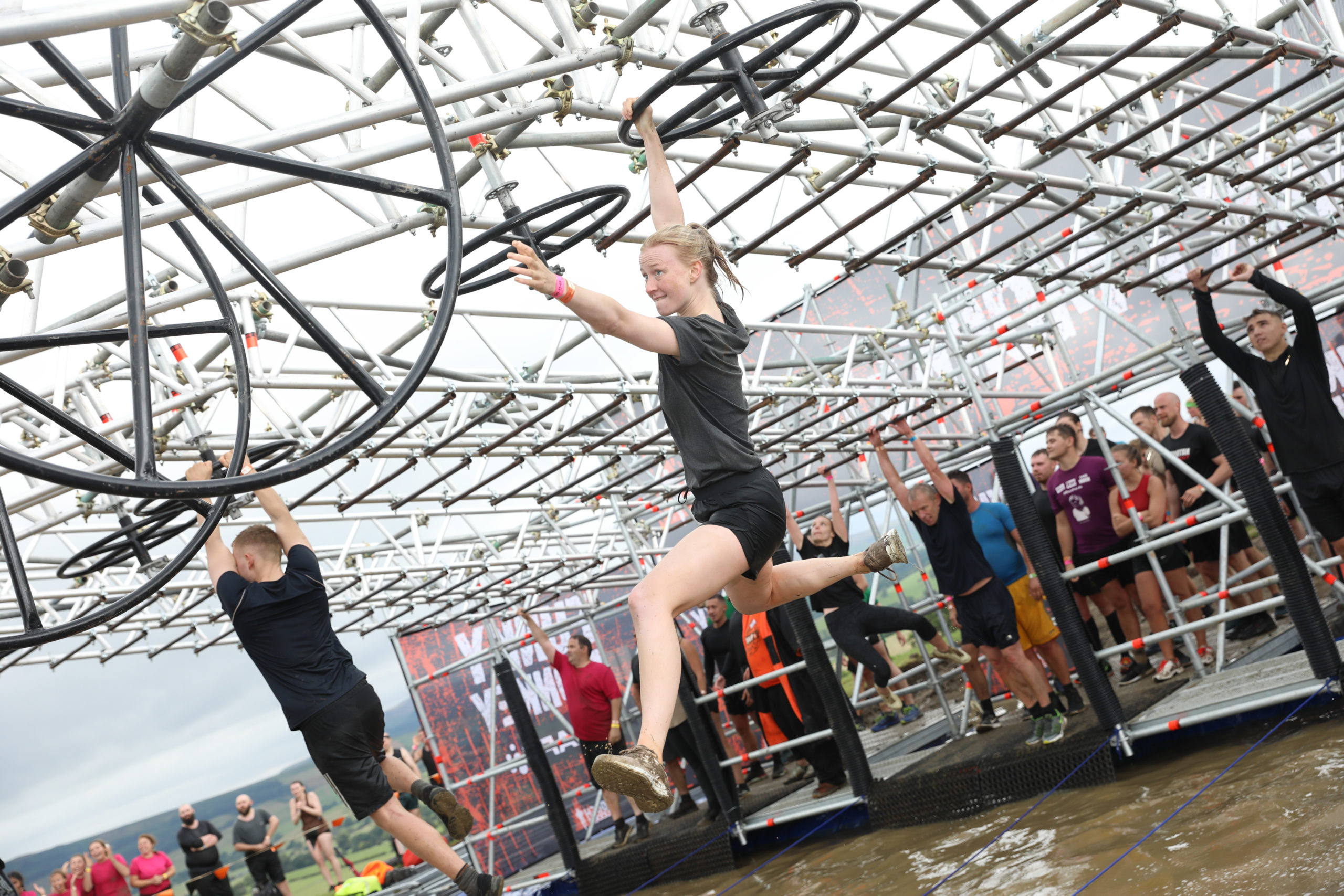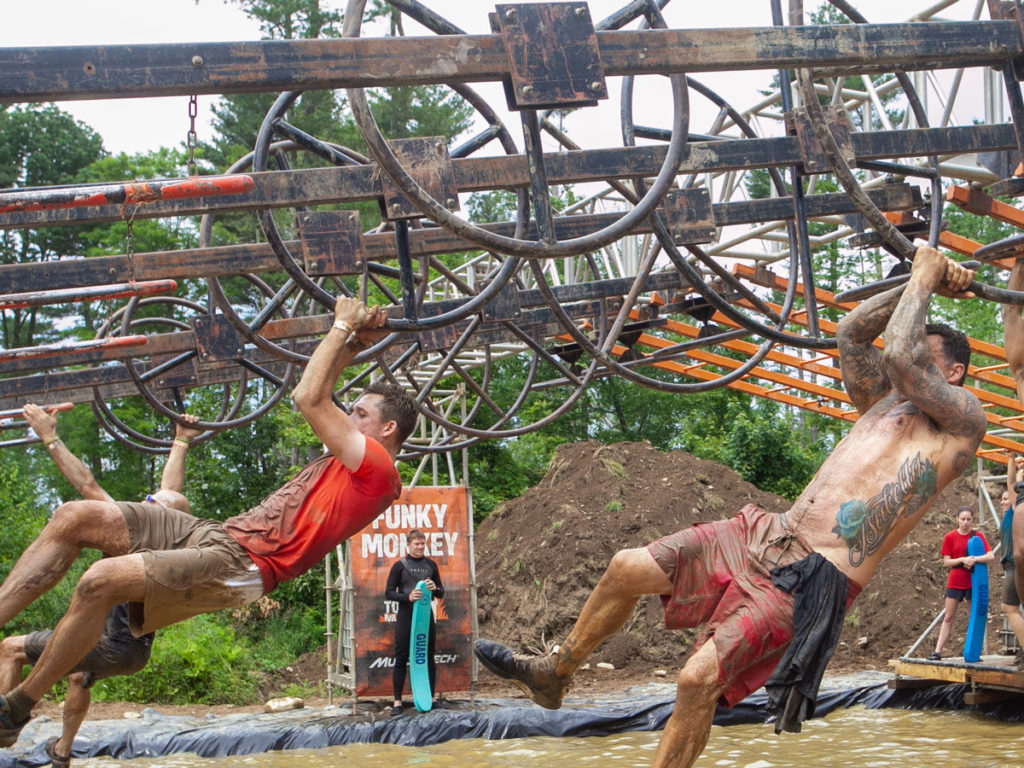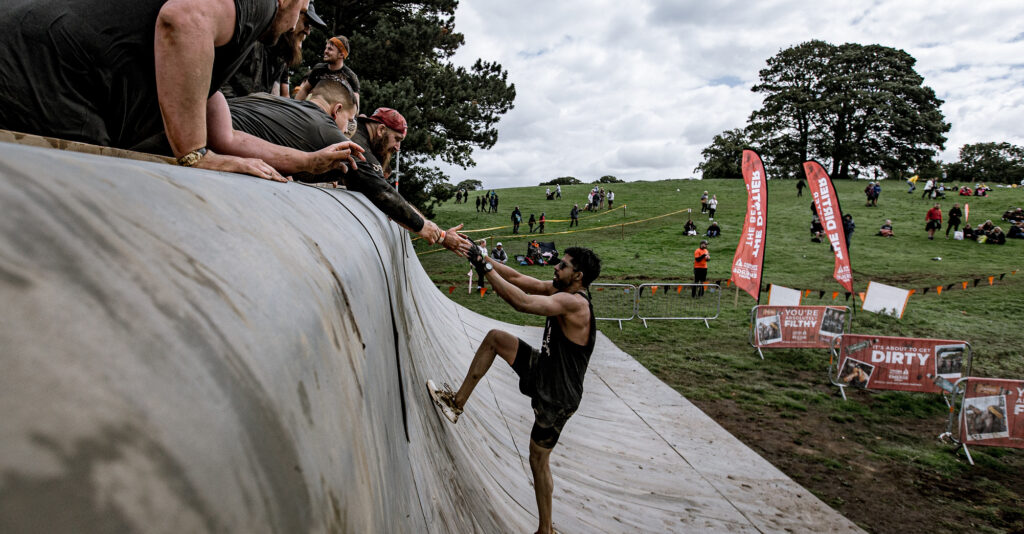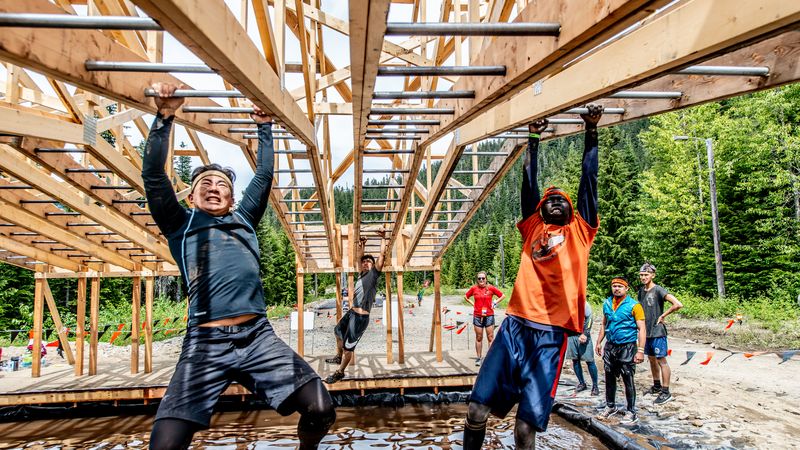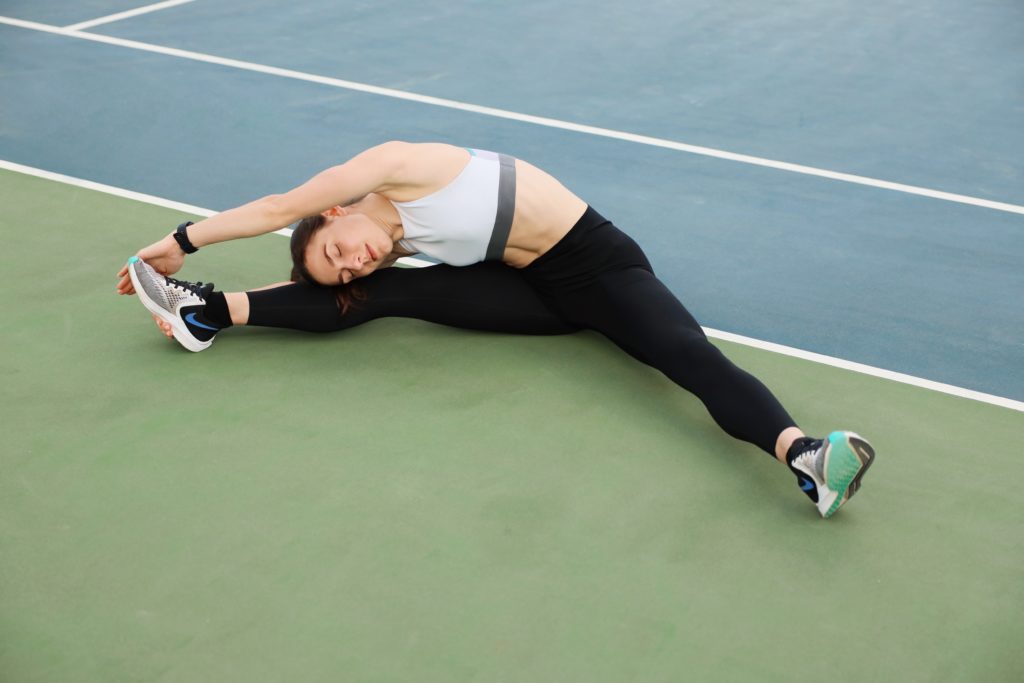One thing that benefits all Mudders, regardless of their fitness level, is grip strength. There’s simply no completing gruelling obstacles like Funky Monkey or The Gauntlet without it. Enter our grip strength exercises.
When talking about grip strength, there are three types (who knew?) – crushing, pinching, and support grip. On a Tough Mudder course, you’ll need all three types to clear obstacles. Follow these expert tips to improve your grip strength and show that course who’s the boss.
Three Grip Strength Exercises
Crush Grip Training
Crush grip is the power that comes from the four fingers that are not your thumb, and is the ability to squeeze something between your fingers and your palm. It’s the type that strength athletes tend to have more of. You can improve your crush grip by including more deadlifts or barbell rows into your training, picking up a nifty hand tool like the Ironmind Captains of Crush grippers, or working on exercises like the farmer’s carry.
FARMER’S CARRY
Not only does the Farmer’s Carry strengthen the crush grip, it also works finger and forearm endurance, which is essential for holding on for the duration of obstacles.
HOW TO DO THIS EXERCISE
1. Grab a pair of heavy dumbbells so that your hands are facing each other, and let them hang naturally at arms length by your sides.
2. Then, walk forward for as long as you can while holding the dumbbells. Aim for 300 feet (slightly less than a football field) without dropping the weight.
3. As you walk remember to keep your core engaged, shoulders back, and chest upright.
Trainer Tip: Use kettlebells or water jugs for variety. Men should start with 40 lbs. and women should start with 20lbs. If you can walk for longer than 60 seconds, switch the weights you’re using for a heavier weight. Aim for three trips total per workout.
Pinch Grip Training
Pinch training, perhaps the most mentally challenging of grip techniques, requires the lifting of weight plates using only your fingertips, engaging the muscles between your fingers and thumb.
PLATE PINCH HOLD & TRANSFER
Not only will this strengthen your fingertips, it also works the forearm extensors (the muscles that open the hand) and can help you hang onto the rings and monkey bars even when your back and arms are fatigued.
HOW TO DO THIS EXERCISE
1. Stand tall and grab a weight plate with your right hand between your thumb and fingers. Your thumb is on one side of the plate and your other four fingers are on the other side. The plate and your arm should be at your side.
2. Bring the plate in front of you so it’s parallel to the ground and your arm is extended out in front of your chest and parallel to the ground. You should be “pinching” the plate so that the thumb is the bottom and your other four fingers are on top. Your fingers would look like you’re sprinkling salt or feeding a duck, except there’s a plate between them.
3. Transfer the plate from your right hand to your left hand while keeping your arms straight out in front of you.
4. Keep moving the plate back and forth as fast as possible for 30 seconds.
Trainer Tip: Start with a 5 lb. plate and work your way up to 25 lbs (or go for 45 lbs. if you want a serious grip challenge). Increase difficulty by transferring the plate behind your back or between our legs. You can also work on holding the plate between your fingertips and thumb in each hand for as long as possible before putting them down. Aim for at least 30 seconds to start, and then progress to longer times and to pinching two plates in each hand.
Or, swap out the weight plate for a hexagonal dumbbell. Hold the head of the hex dumbbell with your fingers and thumbs for 3 sets of 30 second holds and 30 seconds of rest. Progress by increasing the weight of the hex dumbbell.
Support Grip Training
One of the most overlooked parts of grip strength exercises and training is the forearms, which house the muscles responsible for opening and closing the hand. Neglecting these muscles creates a muscular imbalance. It’s not the end of the world, but working on your forearm strength can even reduce elbow pain.
To isolate these small, useful muscles, wrap a thick rubber band around the outside of your fingers and try to open your hand by pushing your fingers against the band. If you’re looking for a way to include forearm strength building techniques into in your high-intensity workouts, try adding kettlebell swings at a moderately challenging weight into your circuit, or work on perfecting your dead hang.
DEAD HANG
The dead hang trains your “support grip,” which is the ability of your forearms and fingers to support your body weight for a long amount of time.
HOW TO DO THIS EXERCISE
1. Hang from a pullup bar with arms shoulder width apart using an overhand grip. Your legs should be hip width apart. Your arms and legs should be straight.
2. Hold on as long as you can with arms fully extended. Try three sets of 10-second hangs with 30 seconds of rest. Easy? Keep adding 10 more seconds to each hang until you can conquer three sets of 60-second hangs with 30 seconds of rest.
3. Next, try hanging with arms extended while gripping a towel for one hell of an upgrade. One hand grips each end of a towel while it’s draped over a pull-up bar. The goal here is three sets of 10-second hangs with 30 seconds of rests. Progress by adding 10 seconds to your hang.
Trainer Tip: To make it harder, intermediate to advanced Mudders can hang with hands on the bar and with both elbows bent at 90 degrees. Aim for two minutes. Bending your elbows isolates your lat (back) and abdominal muscles, eliminating the reliance on grip strength to hold you in the air. Thus, you’re testing your muscular endurance by holding yourself in the air without being able to adjust your grip as easily because your elbows are bent.
Want to test your new and improved grip strength on the pull-up bar? The better your grip strength, the longer you’ll be able to hold on to the pull-up bar, and that equals more opportunity for more pull-ups.
Now you’ve mastered these grip strength exercises, we’ll be seeing you on the start line at a Tough Mudder event near you.
